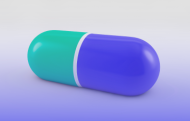
A short guide to A/B testing in pharma
From perfecting messaging to improving test UX to optimizing product life cycles, A/B testing can play an important role in pharma.
Here are a few ways pharmaceutical teams can add A/B testing to their mix.
The role of A/B testing for pharma
Optimizing product launches
Poor marketing messages are among the top reasons pharmaceutical product launches fail to meet launch targets. With A/B testing, you can explore various messaging strategies aimed at all stakeholders to find messages that resonate:
- For patients, this entails testing messaging that speaks to emotional, clinical, and behavioral triggers.
- For healthcare providers, this means experimenting with different messaging to emphasize evidence-based positive outcomes.
- For pharma payers, this means providing messaging on why they should consider covering a particular drug, especially if they already cover a similar one. In one IMS survey, 76% of the participating pharmaceutical companies said that the biggest barrier to successful payer engagement was the "lack of a message resonating with a payer.”
Supporting closed-loop marketing
The real-time data collected from your experiments can help your team implement closed-loop marketing well after product launch. With closed-loop marketing, you collect feedback from user interactions and loop that into your sales and marketing cycles. This enables faster product tests and quicker adjustments.
Perfecting branding initiatives
Over time, A/B testing becomes crucial for pharmaceutical companies for navigating brand positioning challenges. According to McKinsey, the lifespan of brand positioning in the pharmaceutical industry typically ranges from three to five years. Various factors, like emerging competitors, advancements in treatments, and feedback from patients and physicians, can necessitate revisiting your brand positioning strategy.
With A/B testing, you can evaluate and refine your brand positioning in response to evolving market dynamics. From visuals to copy, all branding assets can be tested to find the variations which convert best.
A/B testing in pharma for improving patient experience
Optimizing web experiences
Pharma teams spend a lot of money to drive patients to their websites. However, when patients do land on their websites, most of them miss the opportunity.
In Doctor.com’s survey involving 1,300 patients, 53% of respondents said they turned to pharmaceutical brand websites to research treatments. This trend aligns closely with the trend of healthcare consumerization. However, Andrei Zimiles, CEO of Doctor.com, highlights how pharmaceutical websites often lack features that optimize the "last mile of the patient journey." For example, 88% of healthcare users want pharma brand websites to host a directory of doctors, and 81% would be more likely to use such a pharma website. They’d also like to be able to book appointments directly.
Most pharma websites, however, lack such features.
Integrating A/B testing, via web experimentation, into the pharmaceutical marketing mix enables teams to act upon such insights. This enables you to offer website experiences that resonate with patients. Every element on your website, including copy, layout, and navigation, can be tested and can lead to significant enhancements in the patient website UX. You might, for example, leverage an A/B testing solution to present half your customers with your current homepage and the other half with a variant page featuring a new CTA or banner copy.
Delivering quality omnichannel journeys
A/B testing in pharma can also be applied across multiple channels, such as building a patient-friendly mobile app, via feature experimentation. One McKinsey survey, for example, found that when a pharmaceutical company launched a mobile app to accompany its new rheumatoid arthritis therapy, revenues increased by 8%. With A/B testing, it’s possible to test different experiences for core app features to find the most user-friendly ones.
Improving patient treatment plans
Another use of A/B testing for pharma is with patient communications. In addition to creating more friendly UX environments, optimizing patient communications can affect the outcome of clinical trials. Optimized messaging, for example, can help patients adhere to treatment plans.
McKinsey’s research on how pharma businesses can rethink “CareFlow,” underscores how patient behaviors can vary based on the conditions they’re seeking treatment for. The report suggests pharma providers need to factor in different patient behaviours into their marketing efforts.
In one instance, the firm analyzed the CareFlow for 1,200 depression patients and discovered that 18% of prescribed medications were discontinued within a month. Alarmingly, half of the patients cited "lack of efficacy" as the primary reason for discontinuing treatment.This reason was given despite literature suggesting drug effects might take six to 12 weeks to kick in.
Improving patient communications
Another reason for optimizing communications in pharma? Patients just want to hear from you! Salesforce reports that 62% of healthcare consumers in a global 6,000-person survey said they wanted more advice and resources from pharma companies to ensure best outcomes.
Proper testing and segmentation can help this messaging dial in to correct target groups. You might, for example, find lighter cadences and more suggestive language works with one group over another to encourage engagement.
A/B testing in pharma for improving Healthcare Professionals Portal (HCP) engagement
Optimizing HCPs for collaborative experimentation
Healthcare Professionals Portals (HCPs) are an area that directly ties to a provider’s experience with a pharma organization. These always-on, on-demand, channels are what providers turn to when they want to learn about your solution, access materials to share with patients, and access clinical content. An optimized HCP portal translates to more productive relationships between pharmaceutical teams and healthcare professionals, which translates to improved provider KPIs.
And yet, on account of the broad scope work an HCP portal does, there’s a lot of room for granular optimization. The experiments you run might range from something as simple as testing two pieces of content with one having a “clinician reviewed” badge to see how providers respond to each to something as complex as testing portal search functionality. You need to ensure you have an A/B testing platform which can accommodate all levels of tasks.
Supporting content personalization
Providers are also looking for personalized content. McKinsey suggests the idea of "agile content and delivery optimization" to go about this. Here, delivering personalized content includes "real-time A/B testing for optimization of content and the form of delivery."
Adopting this rapid test-and-learn approach requires continuous monitoring of HCP performance. Content adjustments must be made in real-time to deliver value and regain, maintain, or boost relevance to HCPs. Orchestrating such testing and personalization for content delivery on a one-to-one basis for each provider may only be for mature organizations. However, segmentation of HCPs based on factors such as products, characteristics, and interactions alone can facilitate testing different kinds of personalized content and formats for most pharmaceutical companies.
The challenges of A/B testing for pharma teams
Here are some common challenges pharmaceutical teams run into when implementing an experimentation program.
Ensuring compliance for test data
Pharma is a heavily regulated industry, so the first challenge is testing while staying compliant. Building a HIPAA-compliant experimentation program, using privacy-friendly research, testing, and analytics solutions lays the groundwork for compliant experimentation.
Aligning experiments to team objectives
Given the nature of the pharmaceutical industry, running A/B testing here has more stakeholders than in most typical industries. In most cases, conducting experiments requires the involvement of not only marketing, product, and engineering teams but also clinical, regulatory, and legal experts. Additionally, it's crucial to include key opinion leaders in the process. Ideally, your experimentation solution should enable collaboration between all your teams.
Enabling collaborative team experimentation
Some marketing/growth experiments, like testing messaging, happen on the front end. Others, like running a directory of doctors or testing an HCP portal’s search algorithm, happen deep within your solutions’ tech stack. Such collaborative experimentation needs more than just full stack technical capabilities from a testing tool.
Orchestrating such all-team experimentation programs—with marketing, growth, and product teams working together, with inputs from legal and regulatory resources, as well as opinion leaders—can be challenging. Pharma teams should consider implementing A/B testing tools which work across different layers of the pharmaceutical ecosystem. This provides the collaborative conditions they need to coordinate internal teams towards mutual goals and KPIs.
Kameleoon is designed for pharma teams
With its full-stack, HIPAA-compliant, and All-Team Experimentation capabilities, Kameleoon empowers pharma organizations to deliver meaningful experiences to all their stakeholders, from patients and providers to payers.
Learn why pharma teams trust Kameleoon for experimentation-led growth.


